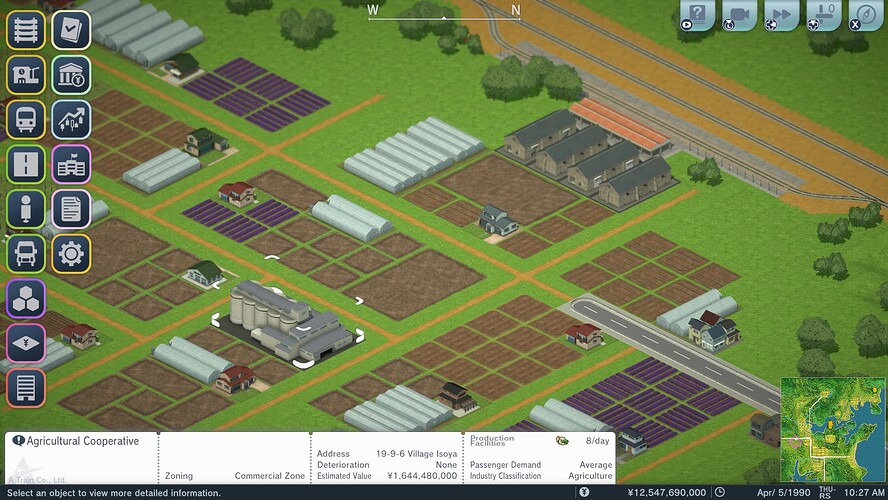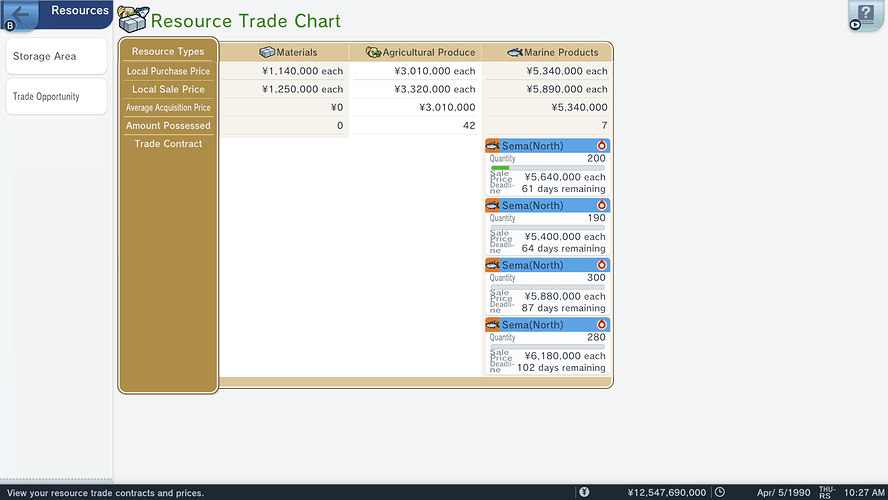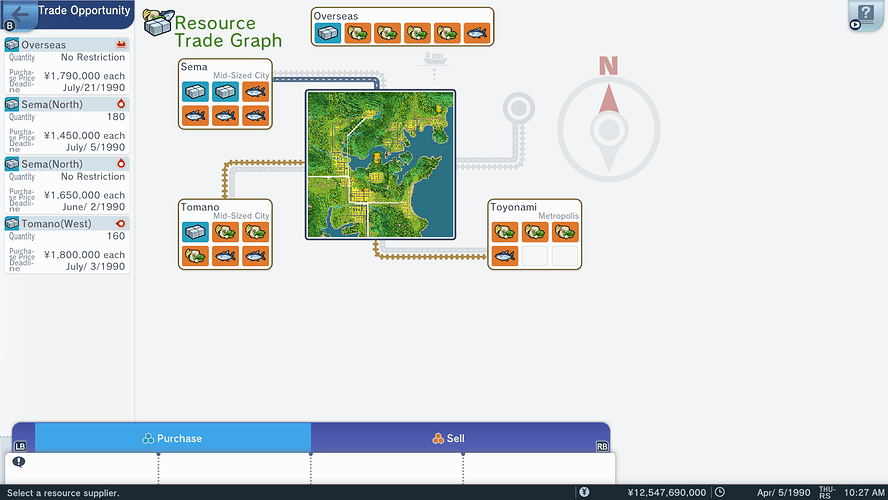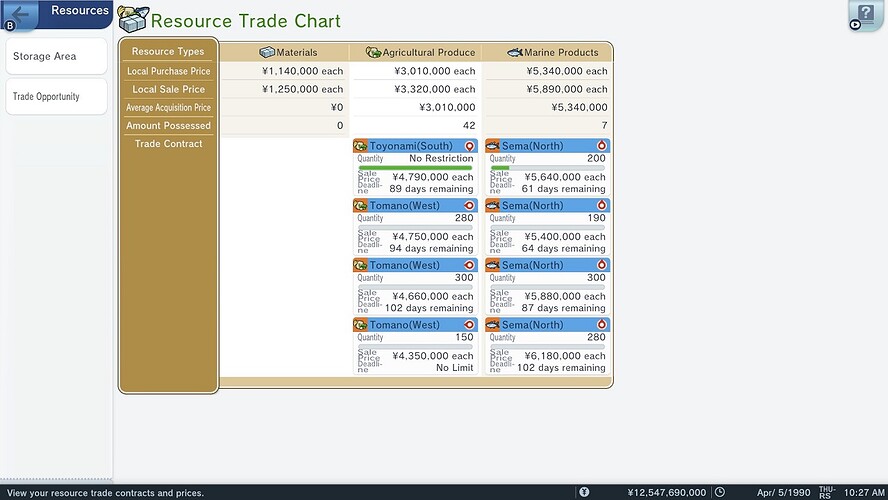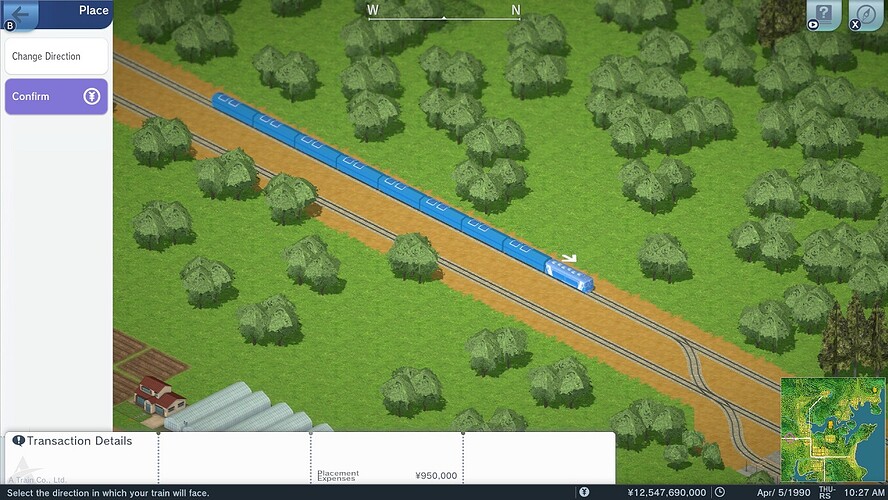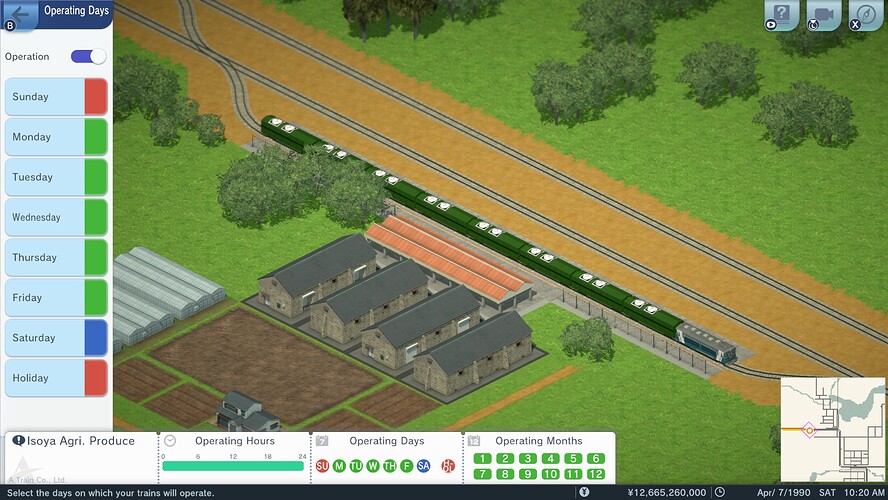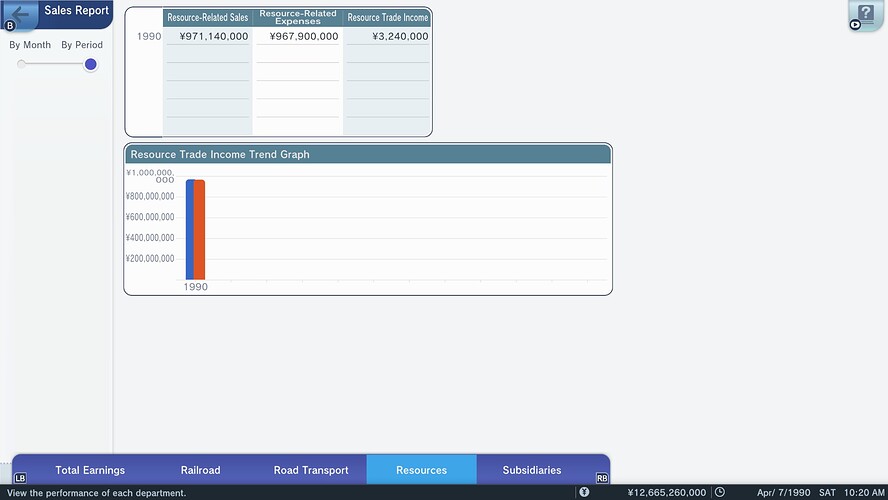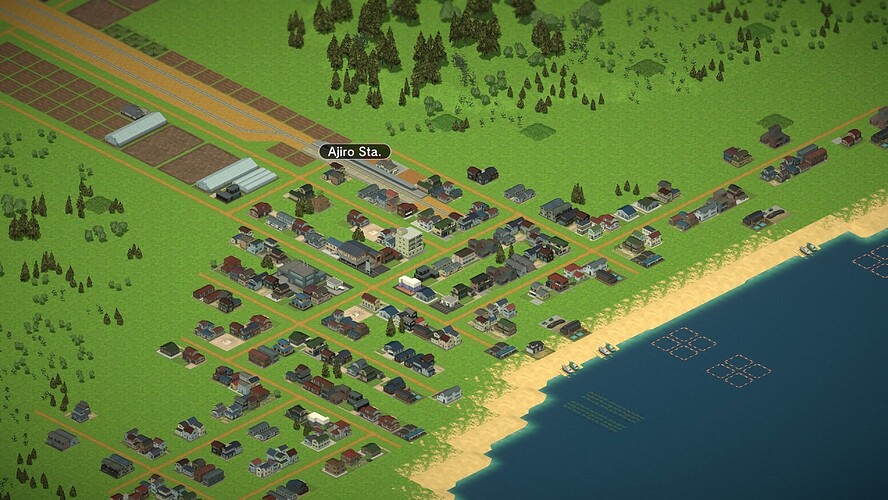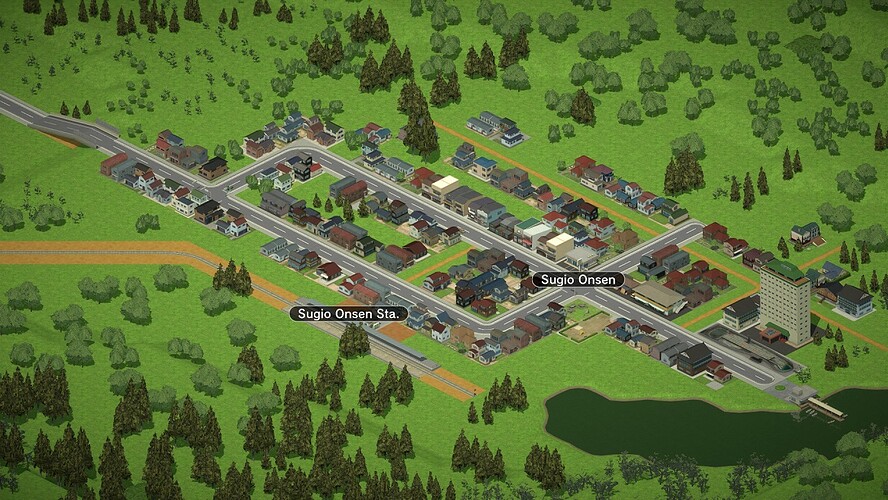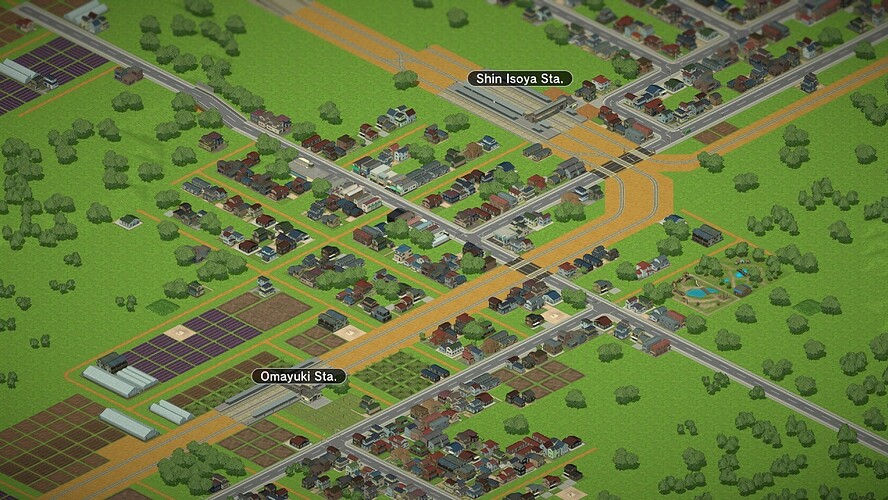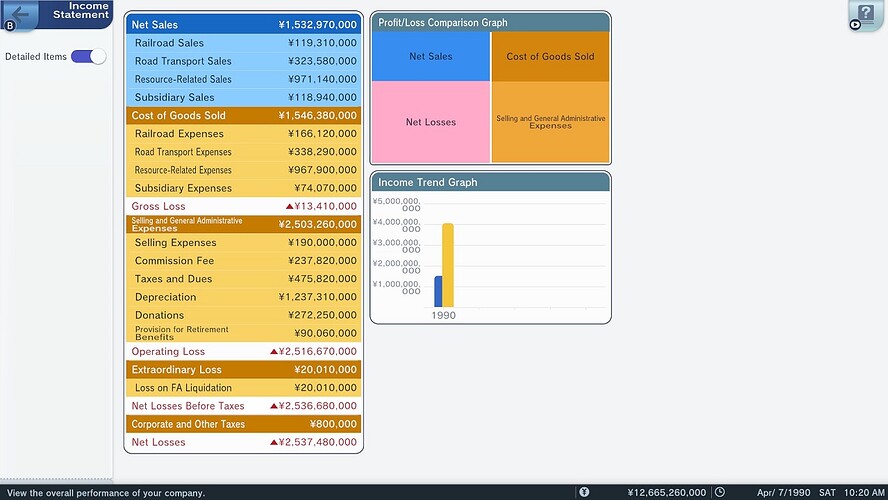Time to dive back into things after a bit of a hiatus. So, buckle up for a long-awaited new entry. Will also get around to answering some of @robc04’s queries once I refamiliarise myself with some UI\Gameplay aspects.
Today’s scheduled train service leaving for City of Hopes & Dreams is about to depart the station. Please ensure you have finished boarding the train and have your tickets ready for inspection by the conductor!
Let’s Play City of Hopes & Dreams - From the Isoya breadbasket to your plate!
Click to reveal...
After a lengthy hiatus, welcome back to another entry in our Let’s Play of the City of Hopes & Dreams scenario on the PC edition of A-Train: All Aboard! Tourism. When we last met our company had just finished taking its first steps into setting up our planned transportation network. Upon our business agenda for today is to continue scheduling our growing fleet of transportation vehicles, complete construction on a number of unfinished stations, and engage in more resource trading opportunities via trade contracts.
We resume our story in the district of Isoya near the local Agricultural Cooperative, where our freight station recently finished construction. During the progression of the game’s timeline from April 1st to April 5th our agricultural warehouses have been busy purchasing and storing agricultural produce, ready for hauling to far off markets. Currently, the local Agricultural Cooperative produces agricultural produce at a rate of eight units per day.
According to the in-game manual, the base daily production rate of agricultural cooperatives is influenced by the number of fields (e.g., rice paddies) in the building’s nearby vicinity. However, the daily production rate of agricultural cooperatives will also experience seasonal fluctuations, distinct from other resource production facilities within the game. Thus, the daily production rate for agricultural cooperatives will be highest during the harvest season and at its lowest whilst the nearby fields are dormant during winter.
Returning to the Resources screen for a moment, we can see that our lorries have already begun to service one of the many marine product trade contracts our company established with Sema. Additionally, we can observe that our company currently posses 42 units of agricultural produce in our agricultural warehouses. Before we progress onto the Trade Opportunity screen we will make sure to take note of the current local purchase price for agricultural products, so that we can compare that to the sale prices being offered locally and in other regions.
A quick glance at the Resource Trade Graph informs us that currently Tomano, Toyonami, and Overseas destinations have active trade contracts seeking agricultural produce. Whilst we are currently unable to service the overseas market due to lacking a trade port, our company possesses the necessary equipment and facilities to fulfil any worthwhile trade contracts offered by Tomano and Toyonami.
After examining the list of available trade contracts being offered by Tomano and Toyonami we can see that there are several profitable contracts currently available. However, a potential thorn in our company’s side is whether there will be sufficient daily production of agricultural produce to satisfy all the demand on offer. After quickly running the maths, assuming the current daily production rate stays consistent, our company determines that there will be insufficient production to satisfying all the trade contracts currently out for tender. Thus, we will have to be selective in which trade contracts we enter into, lest we fail to fulfil our obligations and suffer a financial penalty for breach of contract.
After much careful deliberation our company enters into four separate agricultural produce trade contracts. Our company will for the moment primarily focus on servicing Tomano’s demand for agricultural produce, first and foremost prioritising the orders for 280 and 300 units of agricultural produce due to the potential to incur a breach of contract penalty. Once those two contracts have been fulfilled our company will prioritise servicing the trade contract with Toyonami, before finally service the third and final trade contract entered into with Tomano.
These later two trade contracts should not incur any breach of contract penalties due to the way they are structured. As the contracts either ask our company to provide any produce we can within a certain time frame or alternatively have no functional time limit to them. As each trade contract offers a sale price well above the current acquisition cost for agricultural produce, this should ensure we generate a tidy profit per journey.
Now to finally make use of the diesel locomotive and agricultural produce wagons we purchased a couple of entries ago. After placing our freight train nearby to the aptly named Isoya Agriculture freight station, we set about scheduling the train’s route and operating hours. Currently, our train’s route will take it between Isoya Agriculture and Tomano. Thus, the train’s route will need some modification at a later date when we are able to service the trade contract with Toyonami to the south. To avoid any potential scheduling conflicts with our planned passenger services between Tomano and the Shin Isoya station we will operate our freight service during the night, after 11:00pm and before 6:00am.
Due to our freight train being able to transport 16 unit loads of agricultural produce per journey we will eventually need to set our locomotive to operate every second day. However, due to the surplus of agricultural produce currently being stored in our warehouse, our company can currently operate this service each day for the time being.
With nothing else to achieve whilst the simulation is currently paused, we decide to let the simulation run freely until April 7th when the rest of our train stations are scheduled to complete their construction. Checking the Resources screen after 1:00am on April 6th, we can see that our first delivery of agricultural produce to Tomano was a success. Meanwhile, our lorry-based freight operations between Sema and Oima Fishing Harbour are continuing to steadily supply marine products northwards.
After letting the simulation run unimpeded for a couple of days to progress time, we decide to check the Sales Report within the Reports menu. After selecting the Resources tab we can examine the monthly and\or annual resource-related sales and expenses accrued to date. Examining the chart and figures provided we can clearly see that our company is already generating a small profit within the resource sales division of our company. As we let the simulation progress we can expect this profit margin to grow further, provided we make sensible business decisions.
On April 7th, between 10:00am to 10:20am, the passenger stations of Ajiro, Sugio Onsen, Shin Isoya, and Omayuki complete construction and open to the public. Subsequently, our company can now begin the process of operating several more of its planned passenger services. However, that story shall have to wait for another day as we reach the end of today’s Let’s Play entry. In the meantime, our company will be busy refamiliarising itself with the complex operational plans organised for our remaining sets of rolling stock.
Before we depart though, here is an overview of the company’s current financial situation nearing the end of its first week of operation under our management. We will be keeping an eye on this financial statement throughout the Let’s Play to see how it changes over time as our company slowly shifts into top gear.
From all the staff at A Train Co., Ltd., we hope you can join us next time as we continue our business journey through the City of Hopes and Dreams scenario. Next time we will press the remainder of our rolling stock into operation, monitor how our business operations are faring once all our operational plans have been implemented, and subsequently optimising our business operations if so required.
